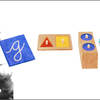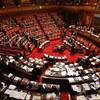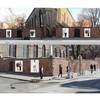Beyond Fascism: Italian Art in the Thirties Soon on Display in Florence
The Fascist regime had a very deep influence on all the aspects of life in Italy, not just on politics, but on culture and society at large.
This is well expressed in the art of the Thirties, to which the exhibition “The Thirties. The Arts in Italy Beyond Fascism” will be dedicated from September 22 to January 27, 2013.
Curated by Antonello Negri, Silvia Bignami, Paolo Rusconi, Giorgio Zanchetti and Susanna Ragionieri, the exhibition will take place in the prestigious Palazzo Strozzi in Florence.
The artistic scene of the Thirties presented a variety of styles: from Classicism to Futurism, from Expressionism to Abstraction, from monumental art to salon painting. In the same decade, the emergence of design and mass communication helped the concepts behind fine arts to be conveyed to a broader public. A prelude to the modern era, the Thirties were a vital time of experimentation.
To account for such a complexity, the exhibition will be articulated in seven sections and will include not only paintings and sculptures, but also graphics, photographs, models and sketches, posters, journals, illustrated books and architectural drawings, in an attempt to give a complete picture of the aesthetic, cultural and ideological atmosphere of the time.
The first section of the exhibit will focus on the geography of art in Italy during the 1930s, analyzing the styles and the themes developed in different cities across the country.
Sironi and Carrà together with the “Novecentists” like Tosi Funi, Wildt and Garbari were the protagonists of the artistic scene in Milan. Turin was the home of Casorati, Menzio, Paulucci and Chessa, and shared a French feel, while Trieste echoed with Mitteleuropean suggestions in the works of Sbisà, Nathan and Bolaffio. Florence and Bologna were the cities of Soffici, Lega, Rosai, Viani and Morandi, while Rome was divided between the Classical and the Realistic movements, with Bartoli, Ceracchini, Carena and Donghi.
The second section of the exhibition analyzes the international appeal of the abstract-avantgarde works by the Futurists, open to European and world influences. It will showcase works by younger painters and sculptors such as Licini, Prampolini, Mafai, Guttuso, Fontana and others.
The topic of transnational influences in the arts is also examined in the third section of the exhibit, featuring works by Italian artists abroad -- De Chirico in Paris, Depero in the US, Mucchi and De Fiori in Germany -- and works by foreign artists in Italy.
The fourth section of the exhibit will focus on the contrasts between modernity and tradition that animated the decade, between aesthetic and ideological tensions. From the movement of “degenerate art” in Germany and the provocative abstract works by Carrà, Ghiringhelli, De Chirico and others, to the more classical artworks inspired by the regime, informed by symmetry and monumentality.
The function of art as a means of mass communication is well served by murals and public artworks such as the 1933 Milan Triennale ones by Mario Sironi. Works by Fontana, Carrà, Sironi and others are also featured in this section.
Great attention is also dedicated to design and applied arts, introducing the element of images’ reproducibility and laying the foundations for a first mass society. Fashion, furnishings, furniture, domestic appliances, as well as advertising and political posters account for the contrasting ideas, from Art Déco and Modernist ones to the most Rationalist, that informed daily life at the time.
The last section of the exhibit is specifically dedicated to the city that hosts it, Florence. In the 1930s, the capital city of Tuscany was the home to a large number of cultural journals, which represented for many artists and intellectuals a way to connect with each other.
For more information on the exhibition visit the website.







































i-Italy
Facebook
Google+
This work may not be reproduced, in whole or in part, without prior written permission.
Questo lavoro non può essere riprodotto, in tutto o in parte, senza permesso scritto.